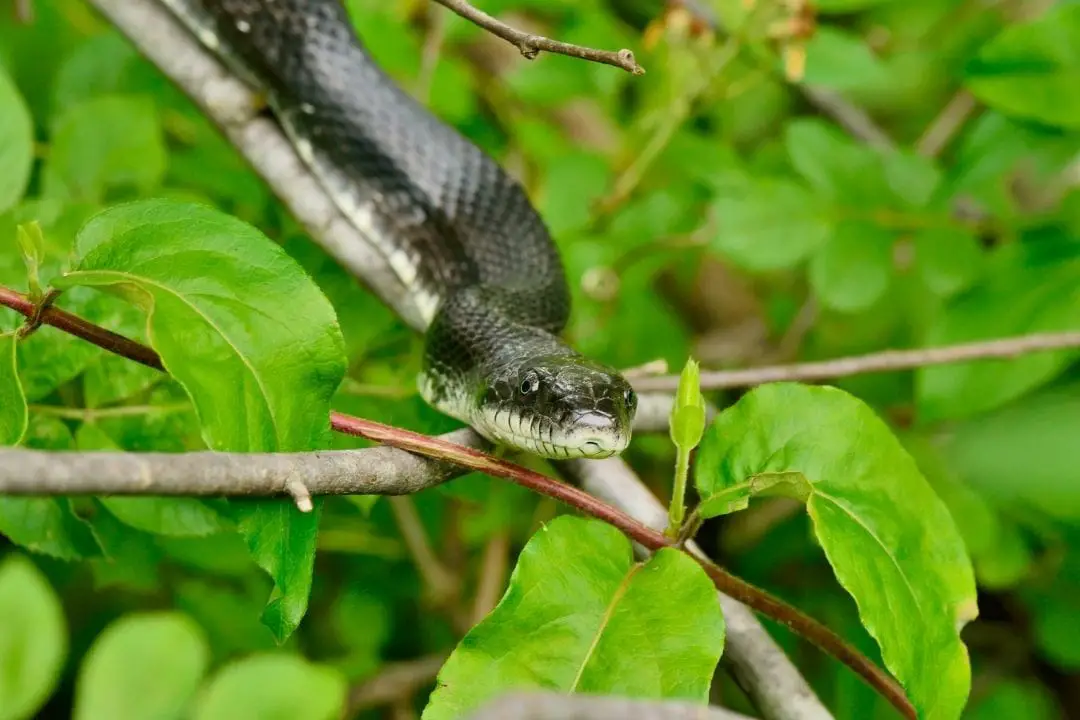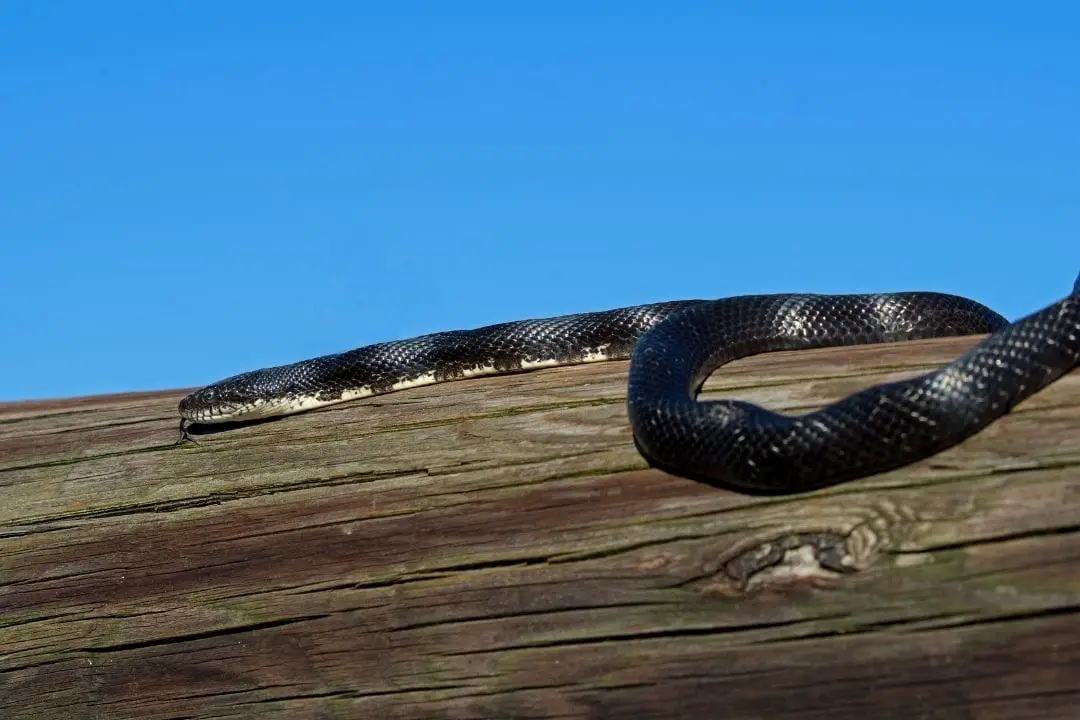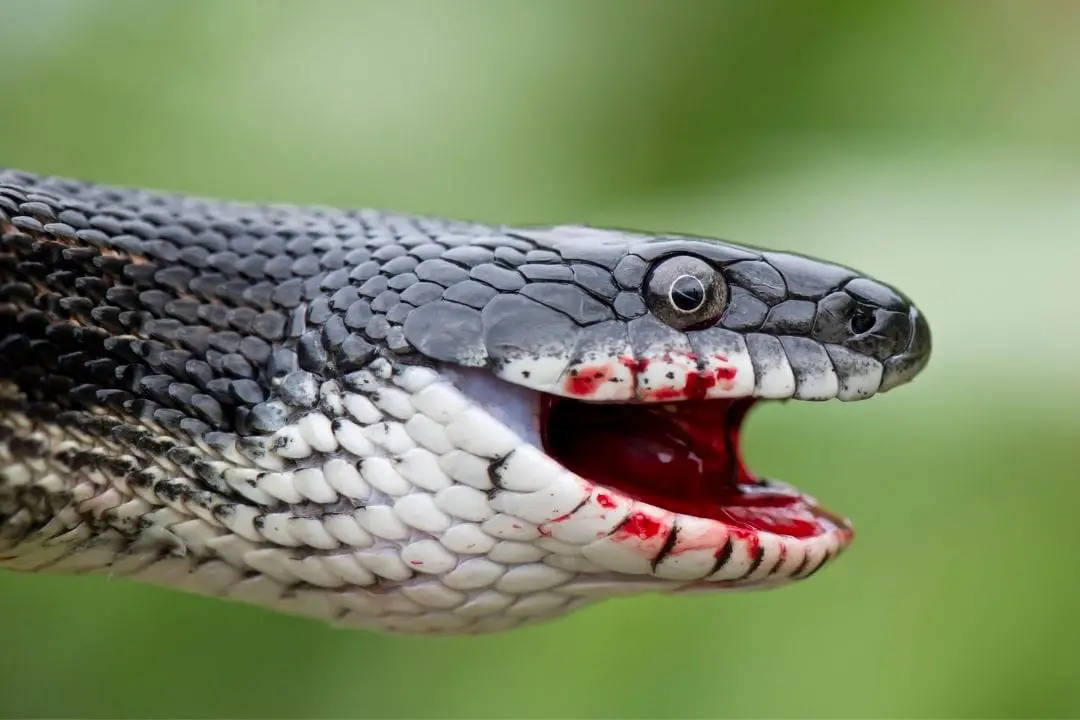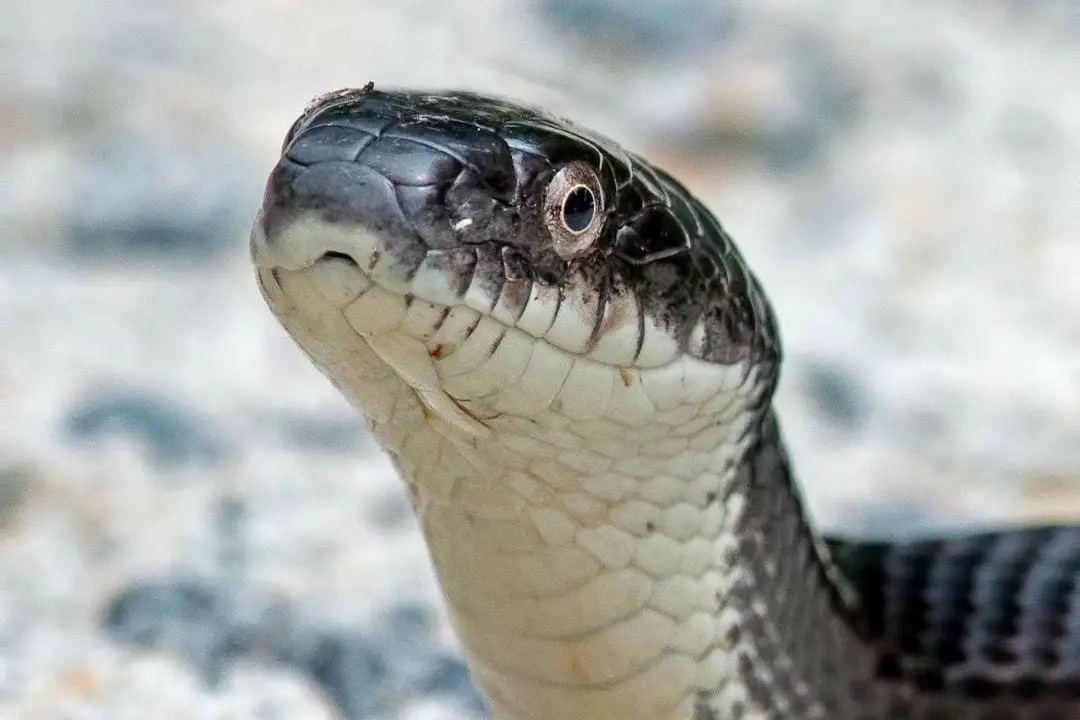Eastern rat snakes (Pantherophis alleghaniensis) are one of the most common snake species over much of their native range. Several other snake species can be mistaken for them, however.
Adult eastern rat snakes are easily told apart by their black coloration, white chin, and slightly keeled scales. In Florida, eastern rat snakes have stripes down the body.
Dinstinctive Features
Eastern rat snakes are large and stout snakes.
The head is wider than the body but is mostly blunt. The neck is a bit narrower as well. This results in a slightly wedge-shaped head, but not like the abrupt triangle of a rattlesnake.
These are non-venomous constrictor snakes. In most of their range, these snakes are black as adults with a white chin and neck. The belly scales are an irregular checkerboard of black and white scales.
Juveniles are gray with irregularly shaped blotches down the body. These are equal in size. They also have a small band near the eyes. Adult rat snakes will grow to lengths between 3.5 and 7 feet long, though longer individuals have been recorded.
Males are also typically longer than females. These snakes can be found from New Jersey all the way down to Florida, with some regional variance in appearance.
Florida Specimens
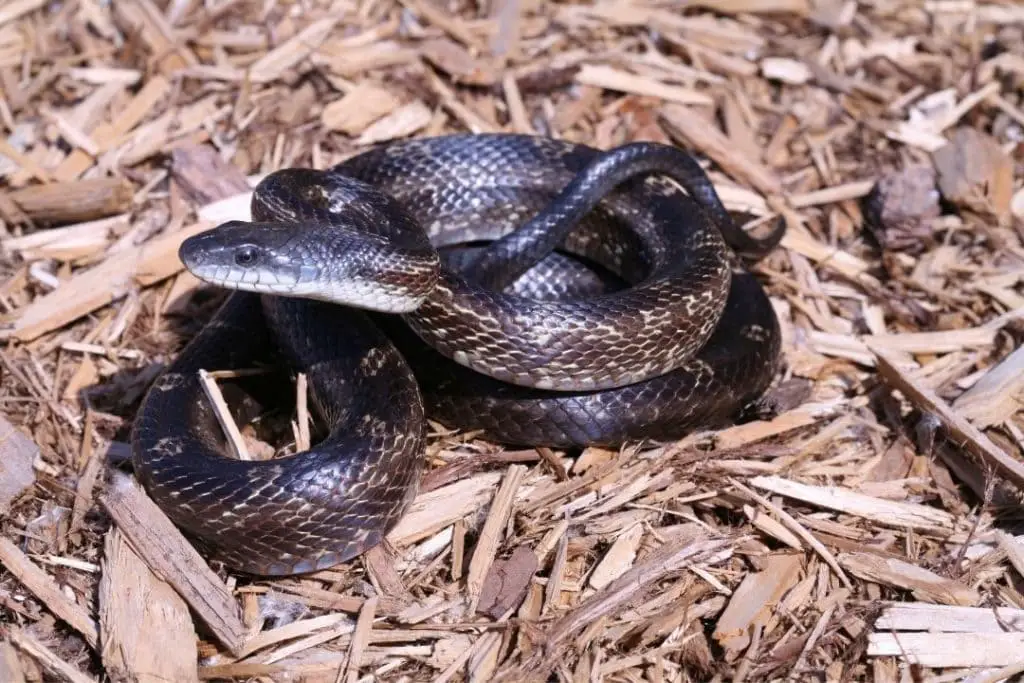
One interesting thing to note is that animals from Florida have a distinct appearance from snakes found in more northern areas. Juveniles feature the same pattern as other members of this species.
The main difference is that they are typically more brown than gray.
Adults are very different.
They have four darker stripes that go down the length of the body. Instead of being black, these animals are typically black and yellow or yellow-brown in the more northern areas of the state.
Animals from the southern part of the Florida state or the Florida Keys can be more orange in color and typically have fainter or no stripes. They retain the faintly keeled scales and the body and head shape of this species.
Behavior
The behavior of these snakes can help distinguish them from other species. These snakes are typically terrestrial or arboreal. They are very good climbers and can be found scaling trees and walls looking for prey.
These snakes have a wide diet that includes frogs, birds and their eggs, rodents, and even bats. They have unique behaviors that include taking on a rippled body shape when startled.
These snakes also rely on producing a foul-smelling and tasting musk to drive off predators. They may also change the head shape to look more triangular. Another defensive behavior is to rattle the tail and assume an ‘S’ posture to allow them to have a longer striking range.
These animals typically aren’t aggressive and even wild individuals will typically calm down once they realize you won’t hurt them. They can be found from rocky hillsides to farmland.
They have a strong sense of smell that they use to hunt. This means they may enter human dwellings or other structures looking for prey.
They are not dangerous to humans and are even beneficial to farmers since they eat rodents. It is important to make sure chicken coops are carefully snake-proofed since this species will happily eat chicks and eggs if they can get access to them.
Similar Species
These snakes can be mistaken for several other rat snakes and even venomous snakes like rattlesnakes. This is partly because the eastern rat snake mimics the rattlesnake to scare off predators.
The main behaviors that confuse many observers are changing the head shape to look more triangular and rattling the tail on leaves to mimic a rattling sound. They are frequently mistaken for related species as juveniles.
The gray rat snake (Pantherophis spiloides) looks very similar to juveniles and these snakes have been known to crossbreed where their range overlaps.
This can result in individuals that have features of both parent species. Corn snakes can look similar to juveniles, but corn snakes are typically red and much smaller as adults.
Juveniles and hatchlings look similar to black racer snakes, Northern water snakes, and even timber rattlesnakes.
Black racers have a uniform pattern and larger eyes and all of these snakes have patterns that go down the length of the tail, unlike a rattlesnake.
Eastern hognoses can be black as adults, but these snakes have an upturned scale on the snout that allows them to dig for the toad prey they favor.
he exact species they need to be separated from depends on the area and the age of the snake. For much of the northern range, the black racer looks similar, but the racer snake has a uniformly gray belly and larger eyes. Juvenile and sub-adult eastern rat snakes can also be mistaken for other species, but the pattern can help separate the species out.
Captive-bred Animals

Everything you need to know about caring for Black Rat Snakes in captivity:
Read our Black Rat Snake Care Sheet (Complete Guide)
It can be confusing to separate these snakes since some captive snakes may have unique colorations. For instance, albino animals lack melanin.
They appear yellow to a peachy-orange and can be mistaken for corn snakes when young. It is important to talk to the breeder so you know exactly what species you are receiving.
The snakes may also be sold under older scientific names such as Elaphe since it was once thought that the Old World and New World rat snakes were in the same genus. Do your research since different species of rat snake require different care requirements.
For instance, the Florida specimens are frequently sold under a slightly different name and require more humidity to stay healthy.
Summary
The Eastern rat snake is a harmless snake that is easy to mistake for others as a juvenile. While the adults are typically solid black, subadults may still have traces of juvenile patterning that can confuse identification.
You may also mistake them for a rattlesnake since they try to mimic timber rattlesnakes to scare off predators. Just look for the pattern of the snake and you should be able to tell what you are looking at.
Make sure you research the native snakes of your area so you know what to look out for. If you have experience with identifying these snakes or you have questions, be sure to leave a comment below.
